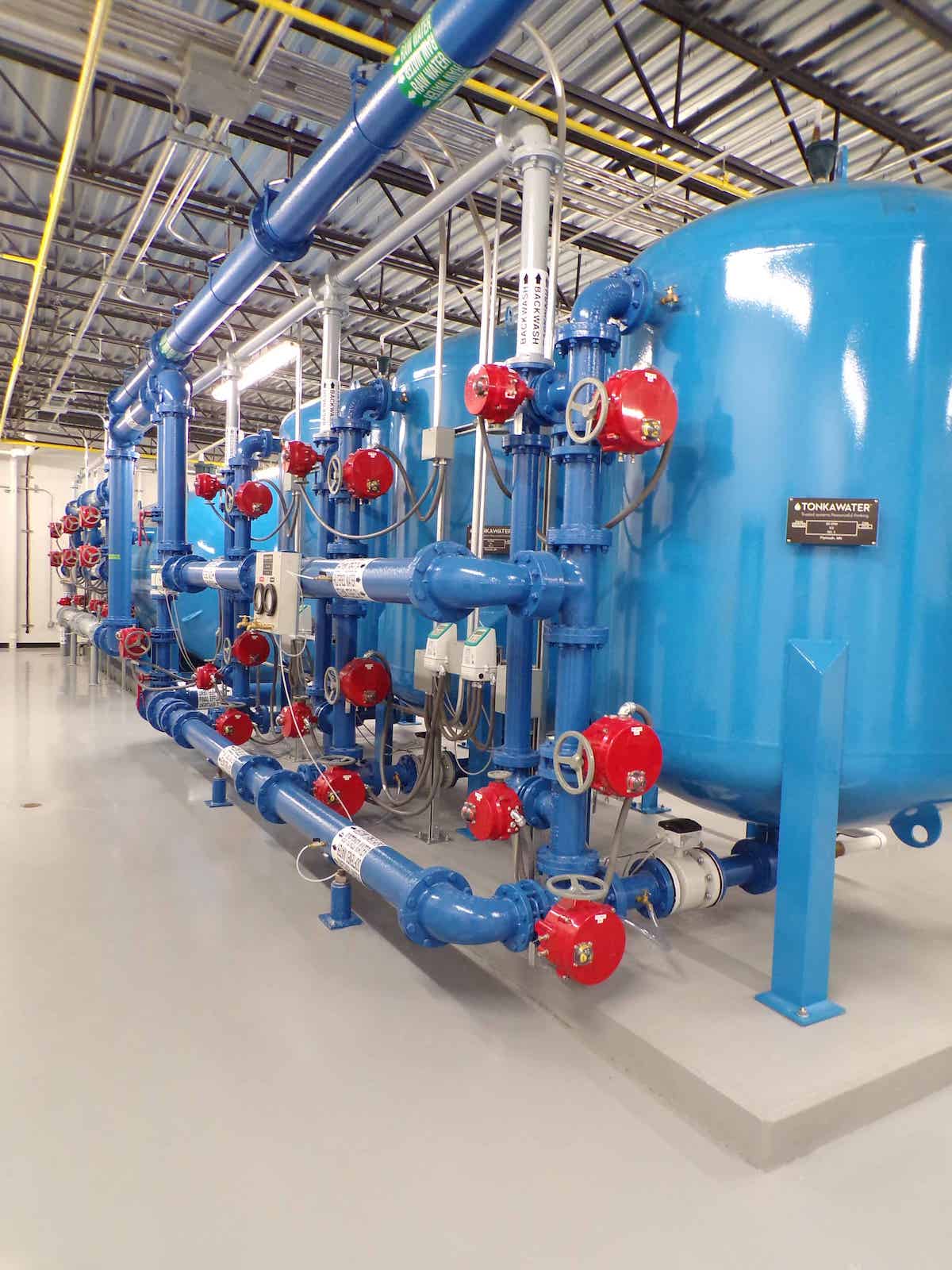Wisconsin drinking water standards: Meeting local and EPA requirements
According to the Wisconsin Department of Natural Resources (DNR) 2021 Annual Drinking Report, more than 98% of the state's public water systems comply with all health-based standards. The Wisconsin DNR implements the state's drinking water program, which includes municipal community water systems, other-than-municipal community water systems, nontransient noncommunity water systems and transient noncommunity water systems.
Community water systems constitute the majority of public water systems and provide drinking water — sourced by groundwater pumped from wells — to 69% of the state's population. Surface waters serve the remaining one-third of Wisconsin residents with drinking water. Below, we discuss Wisconsin drinking water standards and how they influence monitoring and testing groundwater and surface water for contaminants to protect drinking water supplies.
Wisconsin drinking water standards: monitoring and testing for contaminants
Contaminated drinking water supplies can cause acute or chronic health issues. Wisconsin drinking water standards regulate more than 90 contaminants, including:
- Acute contaminants. Because acute contaminants pose an immediate risk to human health, all public water systems monitor for their presence.
- Escherichia coli 0157:H7 bacteria (E.coli): The presence of coliform bacteria, like E.coli in drinking water, indicates contamination from human or animal waste. Discovering E.coli also indicates the presence of other coliform bacteria species, viruses and microbial contaminants. Wisconsin standards require that all public water systems monitor for coliform bacteria. If detected, remedial measures include locating contamination sources and fixing the pathways by which contaminants enter water systems.
- Nitrate and nitrite: Nitrate is a widespread inorganic contaminant in drinking water systems. Common sources of nitrate include agricultural and animal waste. Water-soluble nitrate leeches through soil to contaminate groundwater. In drinking water, these acute contaminants can cause methemoglobinemia (blue baby syndrome), birth defects, increased cancer risks and other chronic illnesses.
- Chronic contaminants. After continuous, long-term exposure to levels exceeding the Maximum Contaminant Level (MCL), chronic contaminants can cause adverse health issues. Some chronic contaminants monitored in drinking supplies are:
- Inorganic chemicals. These include arsenic, mercury, copper, lead and other chemicals. In Wisconsin, some rock formations contain naturally occurring elements like arsenic. Unless subjected to heavy chronic exposure, most people see no ill effects. Long-term exposure to arsenic in drinking water, however, can cause cancer, skin damage, tremors and other symptoms. It is worth noting that the presence of lead and copper in drinking water supplies is regulated by Action Levels instead of MCL standards. Water systems with exceeding action levels are required to conduct additional monitoring and follow procedures to control contaminant levels.
- Synthetic Organic Chemicals. Herbicides and pesticides are the primary sources of synthetic organic chemicals. Contaminants comprise 30 regulated chemicals including 2,4-D, dioxin, hexachlorobenzene, polychlorinated biphenyls and others.
- Volatile organic chemicals. Volatile organic compounds are present in common household products like paint thinners and bug sprays. Industrial dumping or improper disposal of these products can cause spillage and runoff into water supplies. Wisconsin drinking water standards monitor 21 compounds in the volatile organic contaminants group, including benzene, toluene, xylene and other chemicals.
- Radionuclides. Though naturally occurring in some Wisconsin rock formations, long-term exposure to radium and uranium in drinking water increases the risk of cancer and other diseases. All community water systems in the state are required to monitor for radionuclides.
- Disinfectants and disinfection byproducts. Long-term exposure to disinfection byproducts and residual disinfectants like bromate, haloacetic acids, chlorine and other contaminants can cause respiratory problems, cytotoxicity and increased cancer risks. Because of the potential health risks, water systems in Wisconsin monitor levels of disinfectants and disinfection byproducts in drinking water for maximum residual disinfectant levels.
- Additional contaminants. Further, secondary standards apply to contaminants like manganese, iron, sulfate and others. When these elements exceed certain levels, they can cause stained sinks or discolored clothes, and residents may detect an unpleasant taste, smell or appearance in their drinking water.
- Per- and polyfluoroalkyl substances (PFAS) Compounds. In August 2022, Wisconsin's safe drinking water code included standards for two PFAS compounds — Perfluorooctanoic Acid and Perflurooctane Sulfonic Acid. PFAS compounds in surface and groundwater pose a threat to public health. Revised MCL standards for each contaminant have been updated to 70 parts per trillion (ppt) individually or combined.
To meet regulatory MCL limits, common treatment approaches reduce or render contaminants in drinking water supplies inert. Disinfecting drinking water is a common method for inactivating microbial contaminants. Other treatment methods include oxidation, filtration, ion exchange and corrosion control to remove or reduce contaminant levels in water.
Safe drinking water is a priority for communities and municipalities across Wisconsin. With help from an experienced team of hydrogeologists and engineers, you can ensure your community members can access clean drinking water and public water systems comply with Wisconsin drinking water standards.
Partnering with professionals to avoid drinking water violations in Wisconsin
Per Wisconsin drinking water standards, drinking water violations by water systems result from:
- High MCL. Contaminants detected at water systems exceed levels of prescribed MCL standards.
- Delayed monitoring and reporting. A water system delays in collecting water samples, analyzing using appropriate methods or failing to notify consumers of lead and copper identified in drinking water samples.
- Inadequate treatment. A water system fails to implement the required processes and treatments to reduce contaminant levels.
- Delayed notification. A water system fails to provide public notice or Consumer Confidence Report or fails to notify the DNR when exceedances are corrected.
Drinking water violations by water systems are an obvious concern for the communities they serve. The hydrogeologists and engineers at Fehr Graham understand the challenges community water systems face in adhering to drinking water standards and implementing appropriate sampling, analytic and treatment measures. Our experienced team has worked with communities across Wisconsin to analyze drinking water and design cost-effective treatment solutions. Whether municipal leaders need help with distribution system analysis, elevated and ground storage, well, pumps and control, treatment systems or securing funding, we can help find a solution to meet the needs of your community members and environment.
To learn more about how Fehr Graham can help you comply with Wisconsin drinking water standards, contact us or give us a call at 608.329.6400.
 |
Jennifer Buholzer, PE, is a Project Engineer who works on everything from water and wastewater projects to transportation and park projects. She develops relationships with our clients to help them find the most affordable and sustainable solutions. Jen is knowledgeable, results-driven and enthusiastic, offering trainings and webinars and serving as a conference speaker at dozens of events annually. Contact her at |
Collaborative, Insightful, Results-Driven Solutions
Fehr Graham provides innovative engineering and environmental solutions to help improve the lives and communities of our customers.

